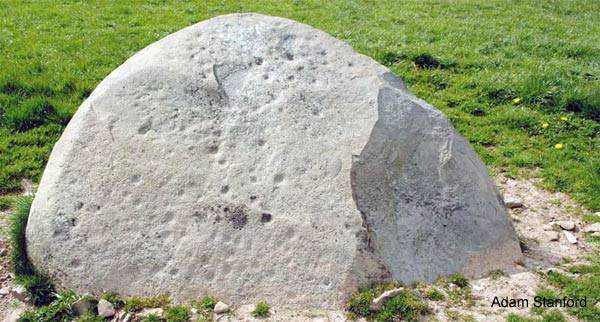Renowned Trafael Stone is much older than previously believed
Archaeologists have discovered that a well-known ritual burial site in Pembrokeshire, Wales, may have been in use from as far back as 10,000 years ago, which is almost twice as far back as expected.
The site in question is the location where the renowned Trefael Stone was discovered. The Trefael Stone is a scheduled ancient monument, measuring 1.2 metres in height, which was originally believed to be a standing stone but is now known to have been a capstone of a tomb.
The cap stone revelation came in 2012 when scientists discovered that the distinctive cup marks on the stone resemble stellar constellation. This would only make sense if, rather than standing upright, it had originally been laid flat as a capstone which would have once been supported by a series of upright stones.
Researchers believed that it was the capstone of a Stone Age burial chamber. However, new research has now revealed that it goes back much further than that. Archaeologists have now discovered beads in the tomb which date back to the Neolithic or Mesolithic periods. This means that the Trafael Stone would have topped a portal dolmen, one of western Britain’s earliest burial monument types. And that is not all that was in the area. A geophysical survey has shown that most of the area within a 1km radius of the site has significant archaeological remains beneath the soil.
The study led by Dr George Nash from Bristol University also involved carbon dating cremated human bones which revealed that the site was in use all the way up until 1900 BC. That means that Trefael once lay in the heart of a ritualised landscape for at least 6,000 years.
Strangely, after six millennia of use, Trafael appears to have been abandoned shortly after the date of the human remains unearthed there. Dr Nash, however, said that this is not surprising. “It ties in with what we know of similar burial sites around Europe. As the importance of metal grew, those who controlled the natural resources became ever more powerful. So Bronze Age Wales moves away from the democratised society of mass ritual burials, to one where power is concentrated in the hands of a relatively small warrior elite."



















